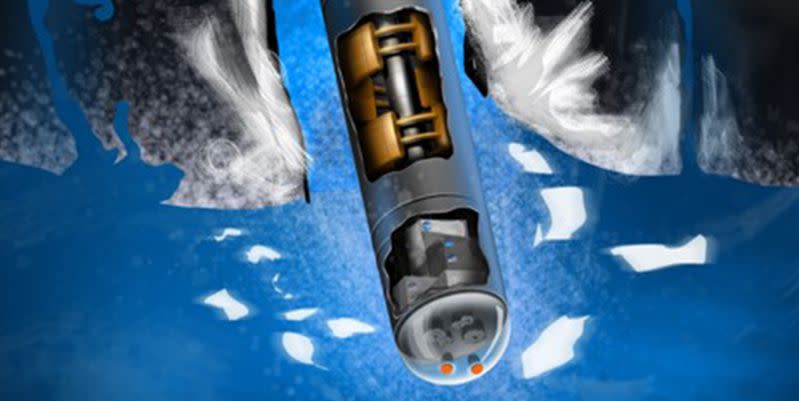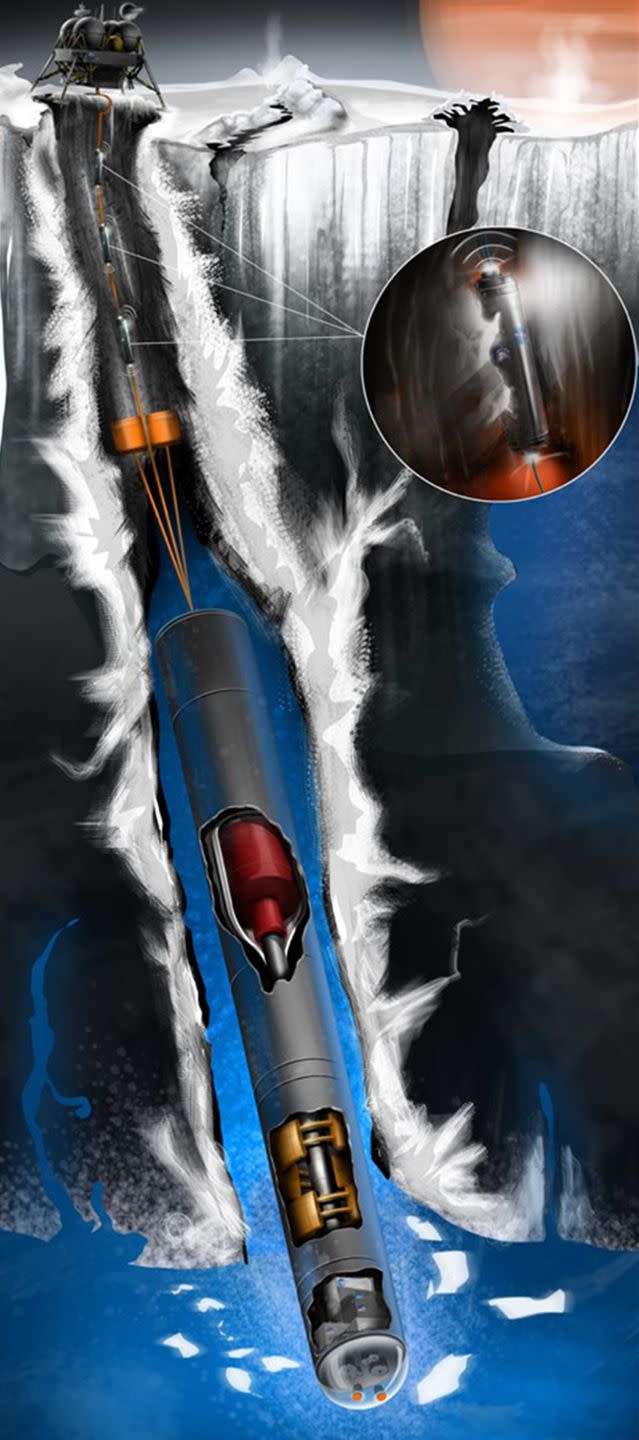A Nuclear Tunneling Worm Might Help Us Find Out What's Beneath Europa's Ice

Europa, a moon of Jupiter, is one of the most intriguing bodies in the solar system. Ever since the Galileo spacecraft discovered evidence of a liquid ocean underneath its icy exterior, scientists have wondered at the chance of life-or at least evidence of extinct life-beneath. While the Europa Clipper's launch is TBD, scientists are already working on the big problem of getting through all that ice to see what's below. Working with NASA, a team of scientists have proposed a solution: a nuclear-powered tunneling robot.
“Estimates of the thickness of the ice shell range between 2 and 30 kilometers (1.2 and 18.6 miles), and is a major barrier any lander will have to overcome in order to access areas we think have a chance of holding biosignatures representative of life on Europa,” says Andrew Dombard, associate professor of earth and environmental sciences at the University of Illinois at Chicago, speaking in a press statement.
Ice on Earth falls within the lower range of that spectrum-in Antarctica, ice sheets at their thickest can reach 4.7 meters, or almost 3 miles deep. But nobody is trying to drill through the eastern Antarctic ice shelf, and a probe will have to prepare for an ice sheet possibly quadrupled in depth. That's where Dombard, his spouse D’Arcy Meyer-Dombard, and the rest of NASA's Glenn Research COMPASS team step in.

COMPASS was first established in 2006 and is a multidisciplinary group tasked with designing "preliminary spacecraft systems." Their hypothetical projects have included new moon landers that could have carried four people to the surface, as opposed to two.
Working with hypotheticals gives the COMPASS team certain luxuries. “We didn’t worry about how our tunnelbot would make it to Europa or get deployed into the ice,” Dombard says. “We just assumed it could get there and we focused on how it would work during descent to the ocean.”
The robot wouldn't simply be mindlessly bashing through Europan ice. Like NASA's recently developed IceWorm, it would be taking samples every step of the way. This includes the ability to take samples of water within the ice shell, the underside of the ice at the bottom of the shell, and even water at the nexus of the water-ice interface at the surface of the Europan ocean.
The drill would be connected to the lander and humanity through a series of fiber optic cables. While there's still some time before a mission to Europa moves from science fiction (like the underrated horror film Europa One) to science fact, NASA wants every hypothetical option on the table.
Source: UIC
('You Might Also Like',)

